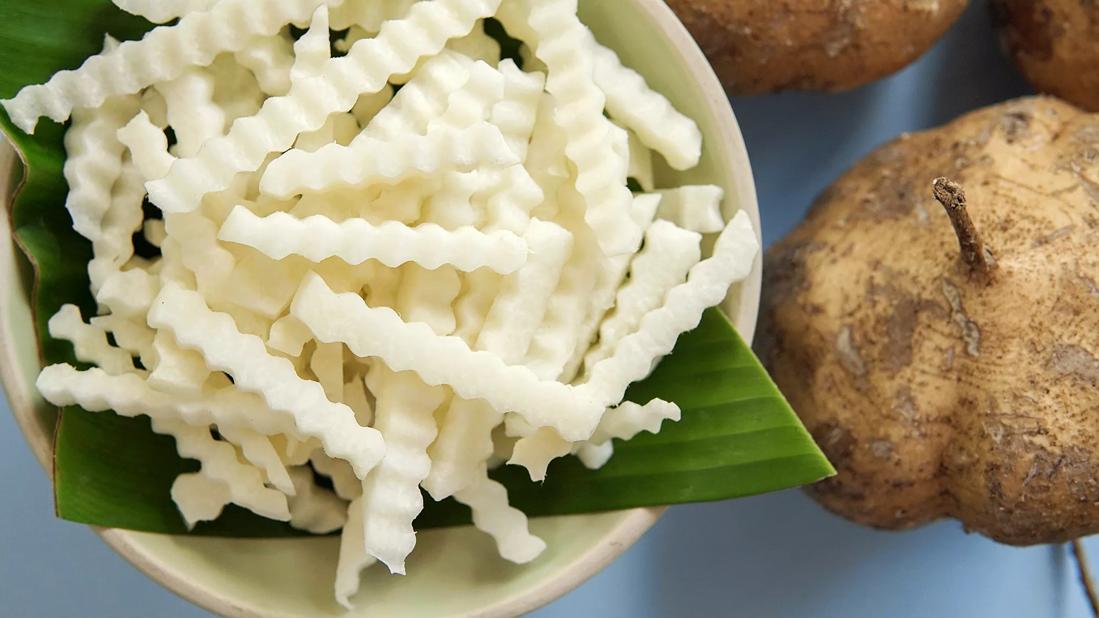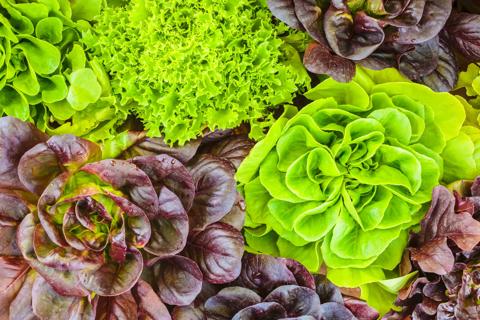Try this slightly sweet vegetable to get more disease-fighting vitamin C and filling fiber

With its white flesh, round shape, light-brown skin and Mexican origins, jicama is sometimes called a Mexican potato, Mexican turnip or yam bean. Pronounced “HEE-kuh-muh” or “HICK-uh-muh,” jicama is full of surprises. “Jicama is a high-fiber, low-calorie vegetable,” says registered dietitian Julia Zumpano, RD, LD. “It has the slight sweetness of an apple with the crunchy texture of a water chestnut.”
Advertisement
Cleveland Clinic is a non-profit academic medical center. Advertising on our site helps support our mission. We do not endorse non-Cleveland Clinic products or services. Policy
You can cut up jicama and eat it raw, like you do with carrot sticks or apple slices. But it’s also a great addition to soups, stir fries, casseroles and other dishes. In addition to being tasty, jicama has many nutrients and health benefits.
A one-cup (130 grams) serving of raw jicama has approximately:
Nutrient-wise, a cup of jicama has:
If you’ve been avoiding jicama in the produce section because you weren’t sure what it is or how to prepare it, you’ve been missing out on these jicama nutritional benefits.
Jicama has a lot of fiber (6 grams per cup) and water (90% water content). This combination has many benefits. “Fiber bulks up stool to prevent constipation and keep you regular, while water keeps your stool soft and easier to pass,” says Zumpano.
Advertisement
Fibrous foods also take longer for your body to break down, so you feel full longer. (Foods high in water have a similar filling effect.) A high-fiber diet can be especially helpful if you’re trying to lose weight.
Jicama is a rich source of inulin which is a prebiotic fiber (in other words, a carbohydrate that your body can’t digest or absorb). Instead, inulin feeds the good bacteria in your digestive tract. A systematic review of studies found that inulin supports a healthy gut microbiome (the tiny microorganisms in your intestines that help with digestion).
Inulin in jicama is especially beneficial for people with digestive disorders. Plus, a healthy gut is good for your mental health, according to findings from other studies.
A cup of jicama has more than 26 milligrams of vitamin C, close to half the recommended daily amount. Jicama also has vitamin A, vitamin E and selenium.
These antioxidants protect against free radicals. Left unchecked, these unstable molecules can cause chronic inflammation that contributes to diabetes, heart disease, Alzheimer’s disease and other conditions.
Antioxidants also support a healthy immune system. They help your body fight off viruses, bacteria and infections.
Jicama’s low-sugar, high-fiber content places it low on the glycemic index, making it a healthy option for people with diabetes or others watching their blood sugar. “Fiber slows the digestion of glucose (the sugar in your blood), which leads to a gradual, steady release into your bloodstream,” explains Zumpano. “When you consume whole foods that are high in fiber, you won’t experience unhealthy, drastic spikes or dips in blood sugar.”
The fiber in jicama helps lower cholesterol and prevent clogged arteries that increase your risk of heart disease. In addition, potassium lowers blood pressure by relaxing blood vessels and improving blood flow to and from your heart.
Jicama is a member of the Pachyrhizus erosus pea family. The edible bulb portion gives root to above-ground vines, flowers and beans. While it’s safe to eat the jicama bulb root, the vines and beans contain a natural insecticide called rotenone that’s toxic to humans when eaten in large amounts. Consuming even small amounts of rotenone may increase your risk of Parkinson’s disease, according to one study.
Many grocery stores carry jicama year-round. Follow these tips when selecting and storing this vegetable:
Advertisement
Trying unfamiliar food doesn’t need to be intimidating. A lot of people from Latin America enjoy raw jicama slices drizzled with lime juice and sprinkled with chili powder and salt. They’re such a delectable treat that street vendors sell them this way.
There are plenty of easy ways to make jicama a staple in your kitchen. Experiment using (and benefiting from) jicama with these recipes:
Advertisement
Learn more about our editorial process.
Advertisement

This root veggie can also benefit your gut, heart and eyes

As the stalky vegetable breaks down, it leaves behind sulfuric byproducts that can make your pee stink

Most of the time, beeturia is a curiosity, not a concern

This cruciferous veggie boosts your bone, eye and heart health and contributes to a lower risk of cancer

Some diets shun them, but research hasn’t concluded that they’re harmful

This versatile type of seaweed may help support weight loss, bone health and cancer prevention

Pickles are low in fat and calories and rich in some vitamins and minerals, but they’re usually high in sodium

Lettuce is a versatile vegetable loaded with antioxidants and good-for-you nutrients

Babies can get congested easily, but you can calm their cough by keeping them hydrated, using nasal drops and running a humidifier

Weight loss may cause loose, sagging skin and muscle loss to your rear

Several conditions, like vitiligo and fungal infection, can cause a loss of pigmentation, leading to white spots or patches on your skin